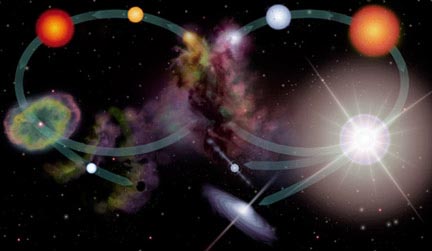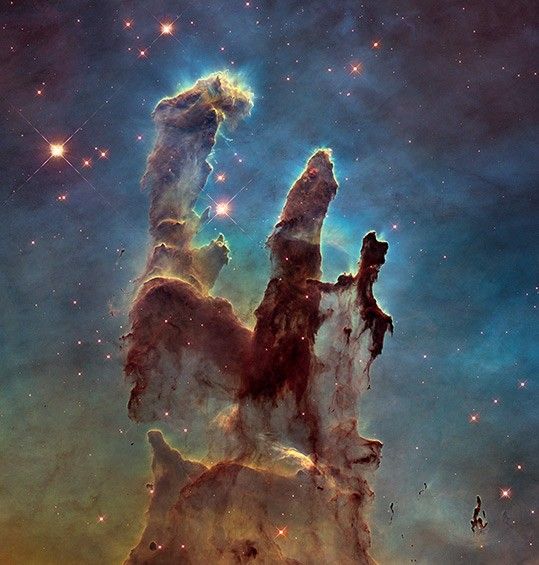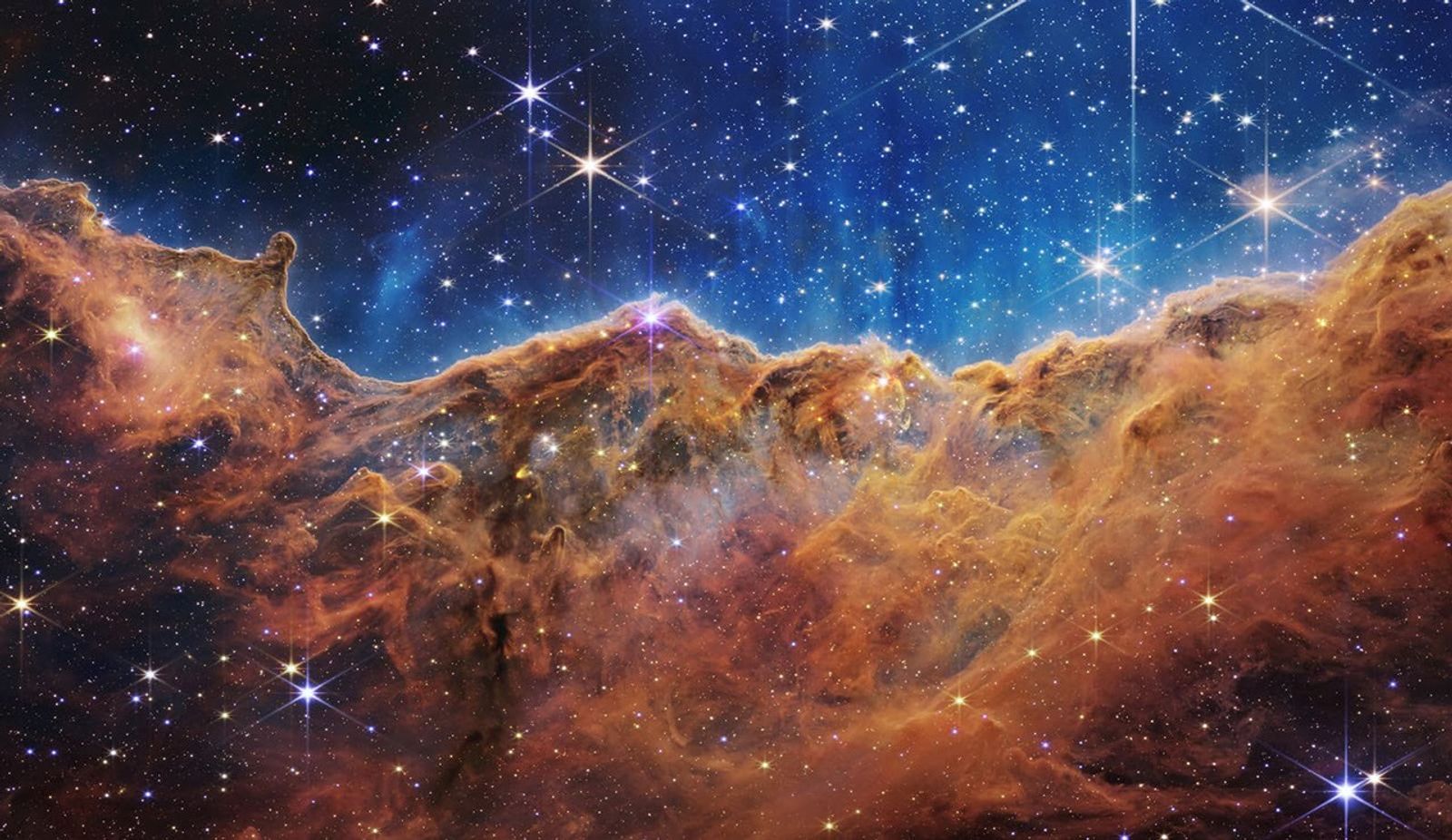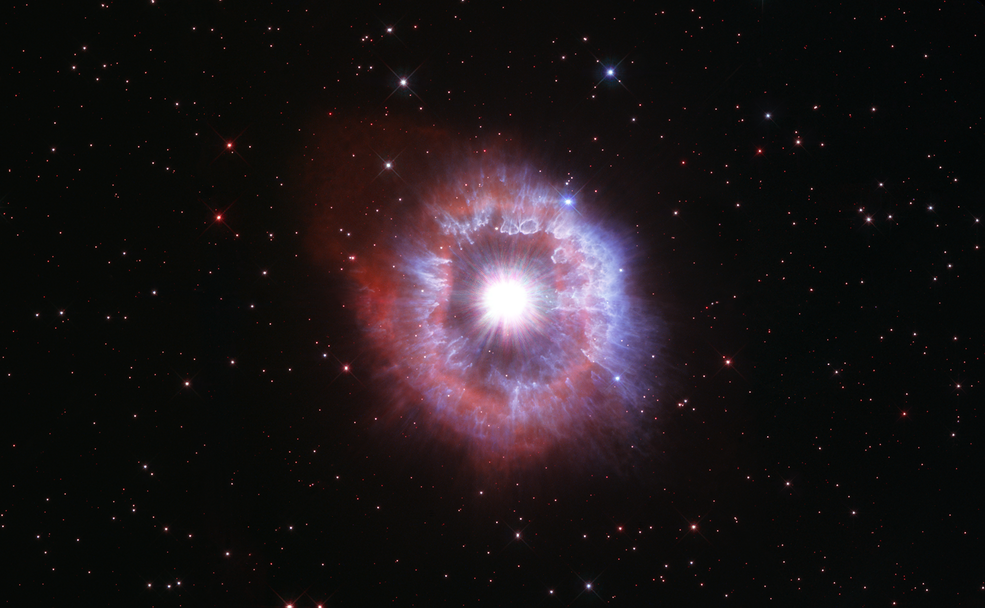Imagine peering into the vast cosmos where stars are born from swirling clouds of gas and dust, shining brightly as they fuse atoms in their cores to release energy. Recent observations from space telescopes reveal that stars come in a wide range of sizes, with some lasting billions of years while others flicker out in just a few million. According to NASA’s overview of star basics, these celestial bodies start their journeys in dense molecular clouds that can be up to 10 million times the mass of our Sun, collapsing under gravity to ignite nuclear fusion. This process powers everything from the gentle warmth of our own Sun to the explosive brilliance of distant giants, as confirmed in updates from space agencies up to 2025.
Scientists now understand that a star’s fate is sealed by its initial mass, leading to dramatic differences in how long they endure. For instance, our Sun has been stable for about 4.6 billion years and is expected to continue for another 5 billion, based on models from NASA’s educational resources on stellar life cycles. Yet, some stars race through their existence at breakneck speeds, creating heavy elements that seed new worlds. This variety keeps astronomers excited, especially with fresh data from missions like the James Webb Space Telescope showing details of star-forming regions.

But what causes this stark contrast in stellar longevity?
How Do Stars Form and Start Their Lives?
Stars begin in giant clouds called nebulae, where gravity pulls hydrogen gas together until it gets hot enough—around 15 million degrees Celsius (about 27 million degrees Fahrenheit, a temperature where atoms move fast enough to smash together)—to start nuclear fusion in the core. This fusion turns hydrogen into helium, releasing energy that makes the star shine, as explained in ESA’s guide to stellar processes. Picture a snowball rolling downhill, gathering more material until it becomes a massive sphere; that’s similar to how a protostar forms from a clump in the cloud.
Once fusion stabilizes, the star enters its main sequence phase, the longest part of its life where it burns steadily. For a star like our Sun, this phase lasts about 10 billion years total, with the core staying balanced between gravity pulling in and fusion pressure pushing out. Low-mass stars might take longer to form but end up with calmer lives, while high-mass ones form quickly in denser parts of the cloud. Fun fact: clusters of stars often form together, like siblings in a family, and can be seen in places like the Orion Nebula.
To visualize this, think of a diagram showing a nebula compressing into a star—astronomers use such figures to map the temperature and brightness changes on a Hertzsprung-Russell diagram, where stars plot based on their color and luminosity. Recent models from NASA’s Hubble mission summaries confirm that formation can take from 100,000 to a few million years, depending on mass. If the cloud is turbulent, it might create multiple stars at once, adding to the excitement of observing these nurseries with telescopes.

What Factors Determine a Star’s Lifespan?
A star’s lifespan hinges mainly on its mass—the amount of material it starts with—because that dictates how fast it uses up its fuel. Low-mass stars, under about 8 times the Sun’s mass (one solar mass is roughly 2 x 10^30 kilograms, or about 330,000 times Earth’s mass), can last tens of billions to trillions of years, slowly sipping their hydrogen like a fuel-efficient car. In contrast, high-mass stars burn through their supply rapidly, lasting only millions of years.
Other factors play smaller roles, like composition; stars with more heavy elements (metals, in astronomy terms, meaning anything heavier than helium) might evolve slightly differently due to how they lose mass through winds. But mass is king: for example, a star with 0.5 solar masses could live 56 billion years, while one with 40 solar masses lasts just 1 million years, per data in ESA’s stellar evolution tables. This is because gravity in massive stars squeezes the core harder, raising temperatures and speeding up fusion rates.
To make it engaging, compare it to engines: a small engine runs longer on the same gas tank than a powerful one. Bullet points for clarity:
- Mass under 1 solar mass: Lifespan 10-100 billion years.
- Around 1 solar mass (like Sun): About 10 billion years.
- 8-20 solar masses: A few million years.
- Over 20 solar masses: Hundreds of thousands to a million years.
Uncertainties exist; for instance, if a star loses mass via strong winds, its lifespan might extend a bit, but models from NASA’s star basics show mass remains the primary driver. Diagrams of stellar tracks on HR plots help visualize these paths.

Why Do Bigger Stars Live Shorter Lives?
Bigger stars, those with masses 8 times the Sun’s or more, have shorter lives because their immense gravity creates extreme pressure in the core, forcing fusion to happen at a furious pace. This rapid burning depletes hydrogen quickly, even though they start with more fuel—it’s like a bonfire versus a candle; the bonfire blazes brightly but burns out fast. According to NASA’s life cycle explanations, high-mass stars use up core hydrogen in millions of years, compared to billions for low-mass ones.
The core temperature in these giants can reach hundreds of millions of degrees Celsius (far hotter than the Sun’s 15 million degrees), accelerating reactions. They also fuse heavier elements like carbon and oxygen after hydrogen, but this phase is brief—days for silicon to iron in the very end. Fun fact: all the gold and iron on Earth came from such stars’ explosive deaths.
For visualization, imagine a chart showing fuel consumption rates; massive stars might burn 10,000 times brighter than the Sun, explaining their brevity. Recent studies from NASA’s Webb telescope plans note these stars form in dense clouds up to 100,000 solar masses, but their lives are volatile from the start. If masses vary slightly in estimates, like 8-10 solar masses for the threshold, it’s due to model uncertainties, but the short lifespan holds.

How Do Short-Lived Stars Evolve and Die?
Short-lived stars evolve through stages faster than their smaller cousins, starting as hot blue giants on the main sequence, then swelling into red supergiants as helium fusion begins. The core layers build like an onion, fusing up to iron, which can’t produce energy—fusing iron absorbs heat instead (endothermic reaction, meaning it takes energy rather than giving it). This leads to core collapse in seconds, triggering a supernova explosion brighter than a billion suns.
The explosion scatters elements into space, enriching future stars, and leaves a neutron star (dense as an atomic nucleus, about 20 kilometers across but 1.4-3 solar masses) or black hole. As per NASA’s Hubble-based summaries, supernovae from these stars last millions of years as remnants. Compare to a pressure cooker exploding when the heat builds too much.
Bullet points on stages:

- Main sequence: Hydrogen fusion, millions of years.
- Red supergiant: Helium to heavier elements, thousands of years.
- Supernova: Core collapse, instant blast.
- Remnant: Neutron star or black hole.
Diagrams of onion-like cores help; uncertainties in exact mass for black hole formation range 20-25 solar masses.
What Are Some Real Examples of Stars with Short Lives?
Real examples include Wolf-Rayet stars, massive at 20+ solar masses with temperatures 10-40 times the Sun’s, living just hundreds of thousands of years while shedding mass via strong winds. NASA’s Hubble observations show they blast particles equivalent to the Sun’s mass every 100,000 years.
Betelgeuse, a red supergiant in Orion about 700 light-years away (distance where light takes 700 years to reach us), started at 20 solar masses and may supernova soon, per NASA’s Betelgeuse profile. Eta Carinae, 7,500 light-years away with 100+ solar masses, is expected to explode within a million years, as modeled in NASA’s visualization studies. These are visible with telescopes, showcasing short lives in action.

Conclusion
In summary, some stars have short lives because their massive size drives rapid fuel consumption, leading to quick evolution and dramatic ends like supernovae, unlike the steady burn of smaller stars. This process recycles elements across the universe, shaping galaxies.
Sources
European Space Agency. (n.d.). Stellar processes and evolution. ESA Science & Technology. https://sci.esa.int/web/education/-/36828-stellar-processes-and-evolution
NASA. (2023, May 3). What is Betelgeuse? Inside the strange, volatile star. NASA Science. https://science.nasa.gov/universe/what-is-betelgeuse-inside-the-strange-volatile-star/
NASA. (2025, May 2). Star basics. NASA Science. https://science.nasa.gov/universe/stars/
NASA Goddard Space Flight Center. (2015, May 7). The life cycles of stars: How supernovae are formed. Imagine the Universe! https://imagine.gsfc.nasa.gov/educators/lessons/xray_spectra/background-lifecycles.html
NASA Goddard Space Flight Center. (2022, January 25). Visualization explores a massive star’s great eruption. NASA Science. https://science.nasa.gov/missions/hubble/visualization-explores-a-massive-stars-great-eruption/
NASA Science. (2015, July 2). Hubble view: Wolf-Rayet stars, intense and short-lived. NASA Science. https://science.nasa.gov/missions/hubble/hubble-view-wolf-rayet-stars-intense-and-short-lived/
NASA Science. (2020, September 16). The lives, times, and deaths of stars. NASA Science. https://science.nasa.gov/missions/hubble/the-lives-times-and-deaths-of-stars/
NASA. (2020, April 10). Piercing the dark birthplaces of massive stars with Webb. NASA. https://www.nasa.gov/universe/piercing-the-dark-birthplaces-of-massive-stars-with-webb/
📌 Frequently Asked Questions
How long do most stars live compared to the Sun?
Most stars like the Sun live about 10 billion years, but low-mass ones can last up to 100 billion, while massive ones burn out in millions. According to ESA’s stellar tables, a 0.5 solar mass star lasts 56 billion years.
What is the shortest lifespan a star can have?
The shortest-lived stars, like those with 40 solar masses, last about 1 million years, as per data from ESA’s evolution guide. They race through fusion stages quickly.
Why don’t all stars live as long as the Sun?
Not all stars match the Sun’s mass; bigger ones have stronger gravity speeding up fusion, shortening lives to millions of years, explained in NASA’s star basics.
What happens when a massive star dies?
It explodes as a supernova, leaving a neutron star or black hole, scattering elements. NASA’s life cycle page details the core collapse in seconds.
Is Betelgeuse going to explode soon?
Betelgeuse may supernova in the next 100,000 years, but it’s uncertain; NASA’s profile notes it’s in its late stages at 700 light-years away.
How do astronomers measure a star’s age?
They use models of fusion rates and observations on HR diagrams; for clusters, all stars form together, so bright ones’ absence indicates age, per NASA’s Hubble summaries.
What is a Wolf-Rayet star?
A hot, massive star shedding mass rapidly, living hundreds of thousands of years; NASA’s Hubble view describes their luminosity millions of times the Sun’s.
Can short-lived stars form planets?
Yes, but their quick deaths might disrupt; massive stars like those in NASA’s Webb studies form in dense clouds, potentially hosting short-lived systems.
What elements do short-lived stars create?
They fuse up to iron and explode to make heavier ones like gold; NASA’s resources explain supernovae spread these.
How does star mass affect galaxy evolution?
Short-lived massive stars enrich gas with elements, triggering new star formation; ESA’s guide links their deaths to chemical evolution.
